The desert in Mauritania delivers a sense of peace to visitors that words simply cannot describe. During the golden hour, sitting atop a moving train, you have the chance to observe the shifting hues of the Saharan sands and sky. Distant rocky outcrops climb out of the desert and you can watch local herders and camels moving across this otherworldly landscape.
The train ride is definitely one of the highlights of Scoot West Africa’s 7-day and 14-day Mauritania Tours. We feel that this is Mauritania at its best; untouched and unspoiled, stuck in an era that few know still exists and fewer still take the leap to experience. Riding the iconic iron ore train across northern Mauritania is an ever-growing legend in the world of adventure travel.
The train snakes across 627 kilometers of desert along the border with Western Sahara, and is operated by the national mining and industrial society (SNIM). Its role is to take iron ore from the mines around the town of Zouerat and deliver it to the port city of Nouadhibou.

Hitching a ride on the train has been touted as one of the moslt dangerous journeys in the world. A quick search online reveals a slew of videos and social media posts of goggled travelers, heads wrapped in a local “seche” (a cotton headwrap common among Nomadic peoples in the Sahara to combat the sun and blowing sands); many of these posts will claim riding the train is illegal and the journey impossible for all but the most daring of travellers.
Truth be told, it can be a dangerous trip. For someone unfamiliar with the country, the language, and the extreme temperatures and other hazards, it can be a trial to organise the journey.
Mentally, the long hours waiting for (and on) the train can be taxing. It is an experience for the hardy – but it is far from the “most dangerous trip in the world”. Speaking to local residents and guides in Zouerat, you’ll find that there is no direct road from Zouerat to Nouadhibou. Anybody traveling between the two towns has an arduous journey via Nouakchott adding a brutal 600 kilometers to their trip using bush taxis and minibuses.
Driving along the same route as the train on the dirt track that runs beside it requires good 4×4 vehicles, and drivers with the skill set to navigate a very tough road. Faced with these options, a lot of people choose to wrap up their belongings and hitch a ride across the desert.
In fact, SNIM provides this service as community outreach, usually running at least one train a day that they call the “Voyager” that will offer a free ride in a passenger carriage behind the iron ore wagons (SNIM also delivers water for free to the Saharan towns and outposts along the route).
Although the passenger carriage is usually full, tourists tend not to take this option and prefer to be up in the ore wagons with all the dust and dirt – and the spectacular views. The idea of looking forward to hitching a ride on the “minérale” is a strange concept to most local people that we have talked to, but that’s not to say that there aren’t some Mauritanians who won’t climb atop the ore.
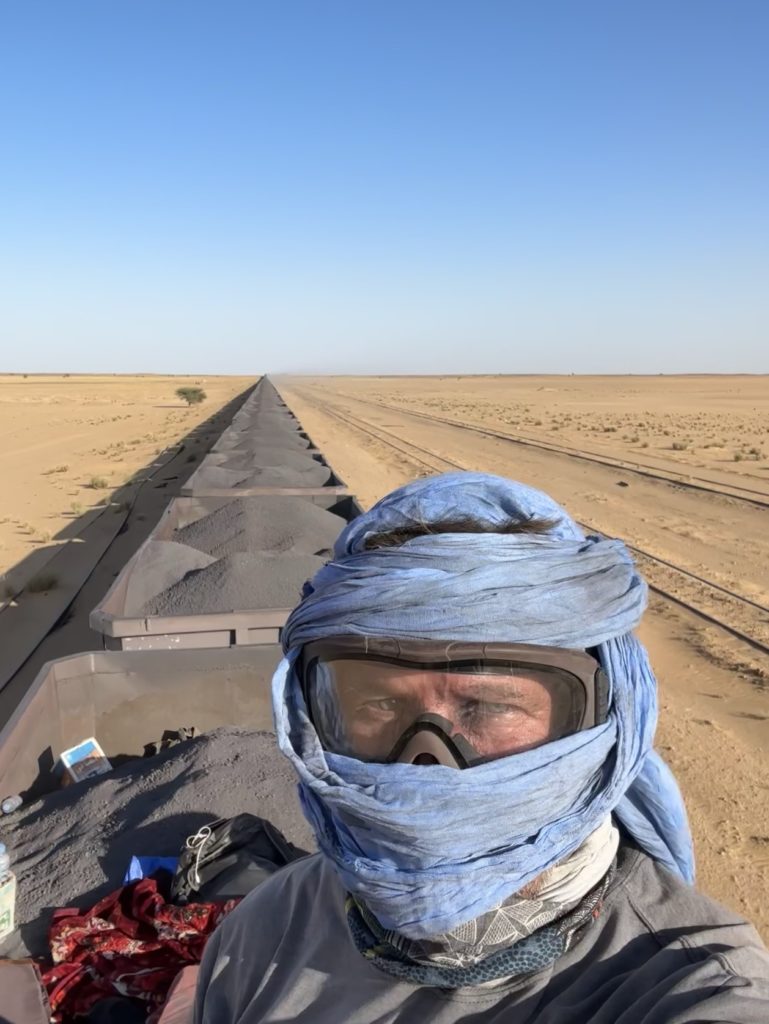
So as a visitor to this sometimes confusing part of the world, how do you hitch a ride on a once-in-a-lifetime train journey?
There is a schedule for the train, but our years of organising tours have confirmed that it’s pointless trying to follow it. You just need to be there when the train leaves.
There should be three trains a day heading in either direction – the wagons are empty leaving from the SNIM base on the coast, heading through Nouadhibou town, the small town of Choum, several little outposts and villages en route, and stopping in the mines around Zouerat.
The wagons get loaded with iron ore, and head back in the opposite direction. Some trains don’t stop in Zouerat town; some may not stop in Nouadhibou town – and in that case, you will end up getting escorted out of SNIM’s base at the port by a confused security guard. The ‘Voyager’ train that runs at least once a day stops everywhere, and you can theoretically join and leave the train at any of these stopping points.
A lot of adventure travellers join the train in the town of Choum, but this means long waits and more often than not, you will be getting on the train long after the sun has set – and missing a lot of the scenery as you blast west towards the coast at night. Choosing to leave from Zouerat will give you more time on the train and also, hopefully, give you the chance to climb on to the train during daylight.
You’ll need a taxi to cover the approximately five kilometers from Zouerat town to the train station. When we take guests on our trips, we work with a driver who can stay with us in the eventuality that the train has a delayed start – having someone with the know-how to find out what’s really happening (and where to get a sandwich while you wait to find out) can turn a grueling day into a tolerable one.
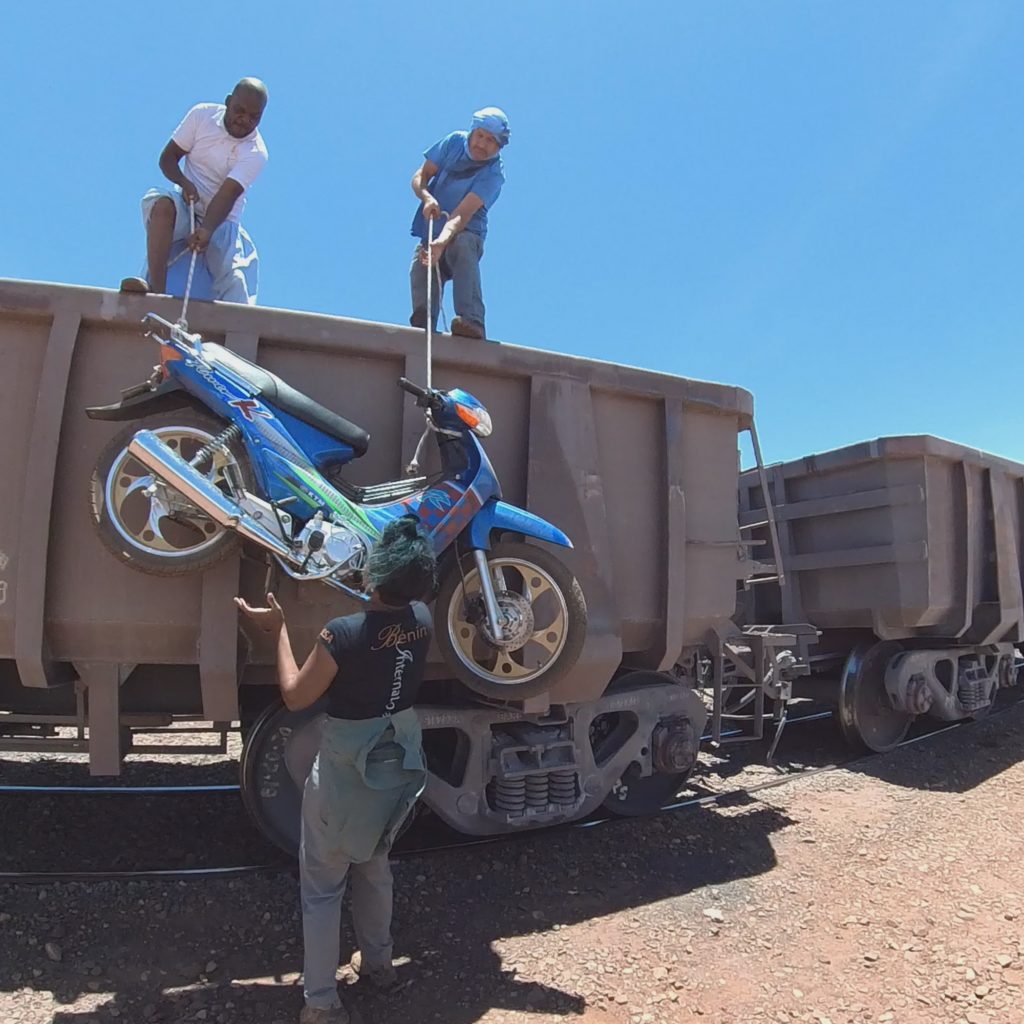
Your next question might be what to expect on the ride. The short answer is be self-sufficient and flexible. The first step is not falling off the train. Before the train actually starts to move, you’ll hear a clack-clacking sound, starting from the back of the train and rolling to the front – this is the sound of the wagons tensing up. The next step will be a train lurching – and many a novice rider risks falling off the train at this stage. So when you hear the cracking – sit down and hold on.
If you choose to ride in the direction of the empty wagons, you’ll get less wind, but also no views and a potentially unbearable ride in a metal wagon in the beating sun. The trains do tend to pull flat wagons at the back (used for carrying cars and trucks ec). If you had to go from the coast, then it wouldn’t be the worst idea to climb on to one of these instead. We recommend riding in the other direction – towards the coast on full wagons, in which case you’ll sit on top of the ore.
The wagons are large enough to stash your bags, find a spot to sleep amidst the ore, and use a corner for your “needs”. Sometimes the ore has been processed and depending on how much water they add after loading, will depend on how dirty you get. We prefer the processed ore though because despite the dust, you can get yourself more comfortable. The unprocessed mineral has a lot of rocks that make your chance of making a nice bed a lot trickier.
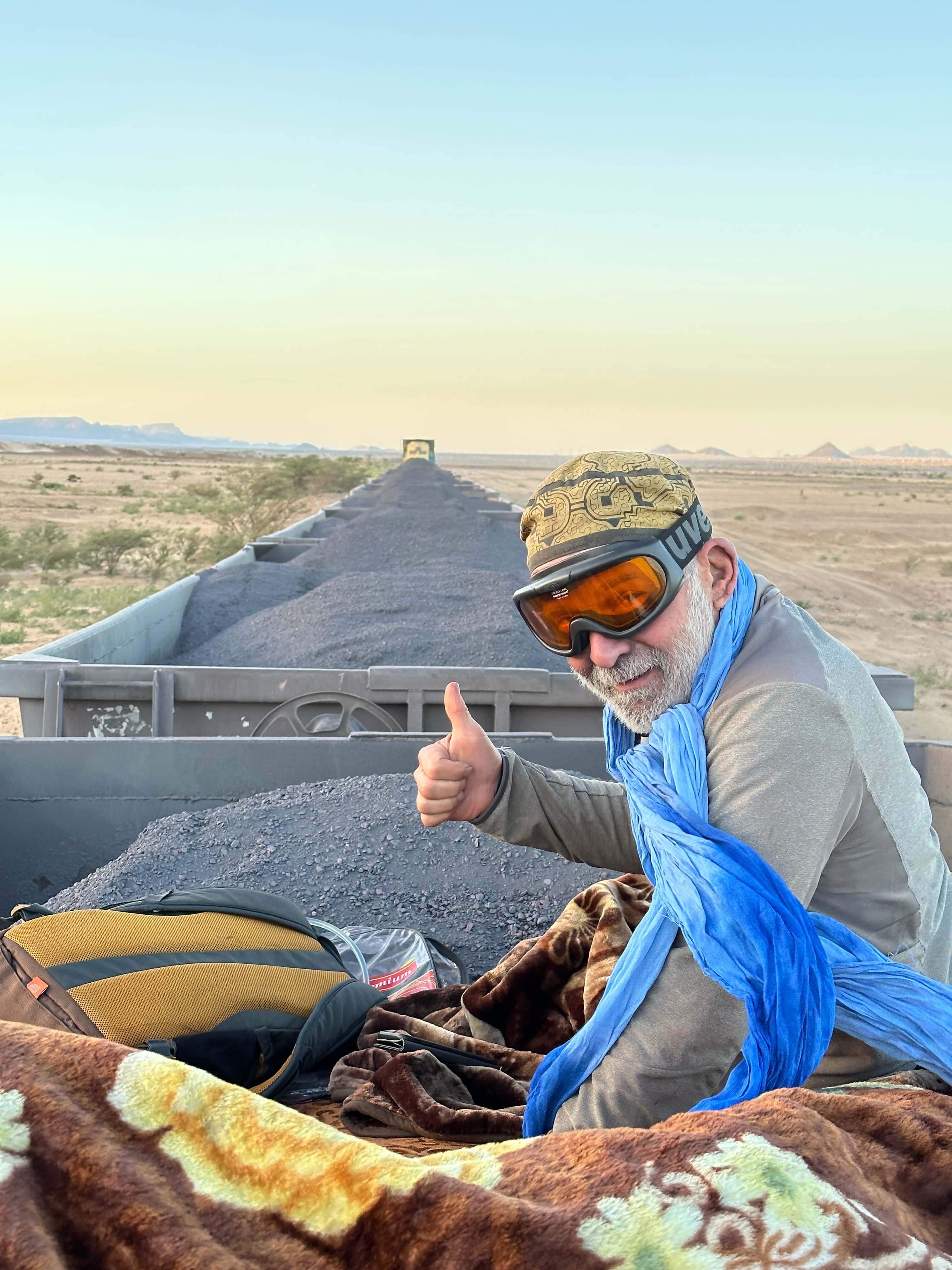
The ride offers a few opportunities to stop, and if you’re lucky you may be able to get off the train to get a cold drink or a snack. But this depends a lot on whether you have chosen a wagon near the “voyager” car – meaning it’s closer to town when the train stops. The stops are also unpredictable, and you may not get quite enough time to grab the essentials.
At Scoot West Africa, we pack a kit onboard for each of our clients – a bedroll, camping stoves and lights, cold water and food for the journey, as well as tarps to hold everything down and keep the iron dust to a minimum.
You’re going to pass a night on the train, and it gets cold – so be prepared as well for the extreme temperature dip in the middle of the desert. There’s always a possibility of breakdowns and delays due to other trains, so it helps to find a contact on the ground who can update you on the situation and deliver water should you run out. Our vehicles travel the route beside the train and if we encounter any problems, they are on hand to provide support.
Join Us for a Tour
We believe in immersive travel that allows you to discover a place on its own terms. We organize small group trips, custom adventures and unique itineraries with the independent traveler in mind.
When you arrive in Nouadhibou there will be taxis waiting to collect people from the train. You can guarantee they will see you sitting up on top and they will chase the wagons as the train rolls to a stop. Pick a taxi if you want one, and you’ll have to negotiate a price to get you into town or further along to the coast.
We suggest staying with Victor at Villa Maguela. He will offer to collect you and his place is on the water so you can swim and wash away the mess rather than destroy his bathrooms with iron ore dust.
The iron ore train is one of our favorite experiences in West Africa and a bucket list journey for anyone who dreams of the Sahara. Contact us to join our trip or simply for help with logistics, to put together an itinerary or for recommendations on places to stay.

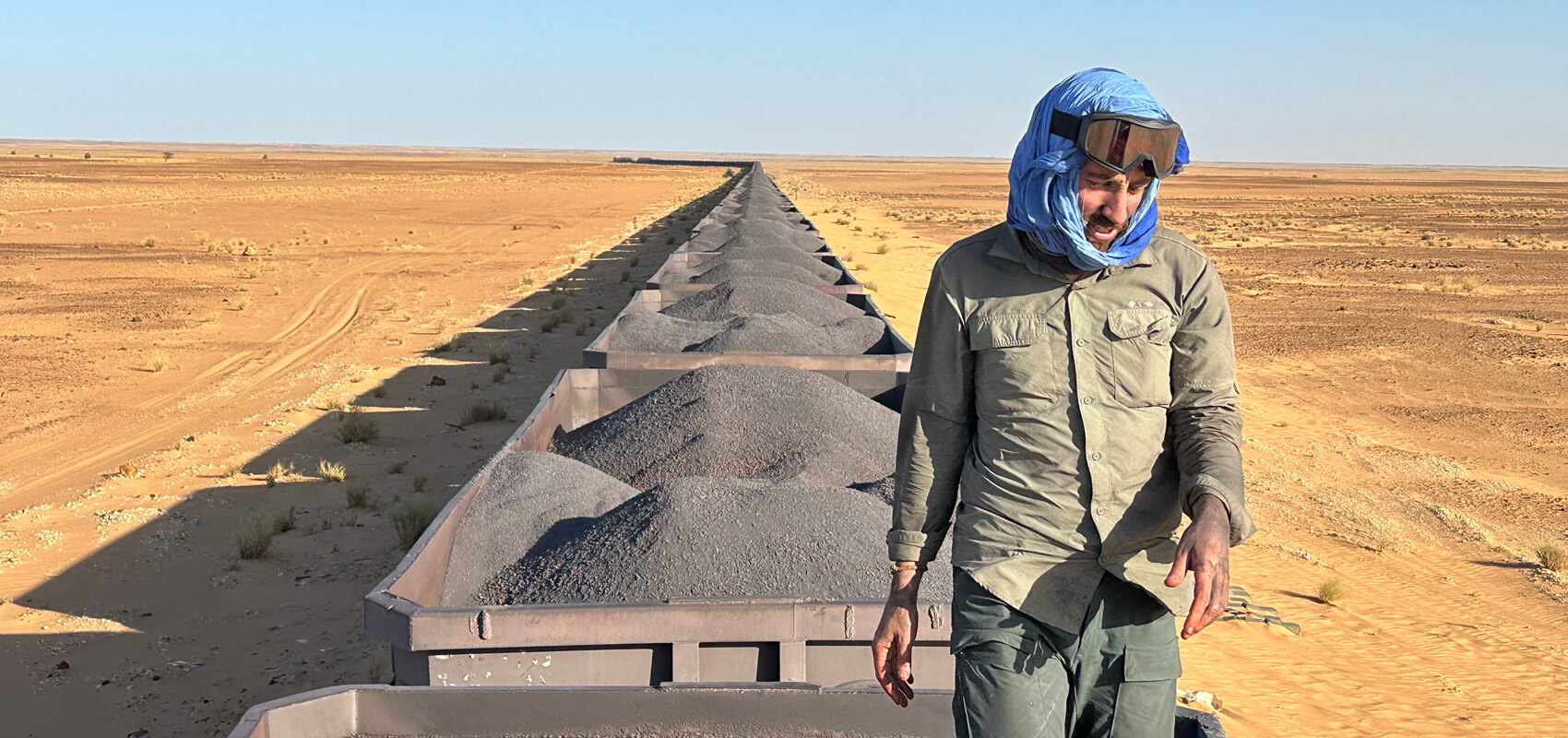
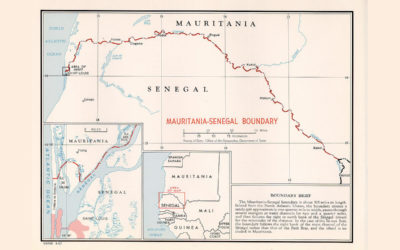

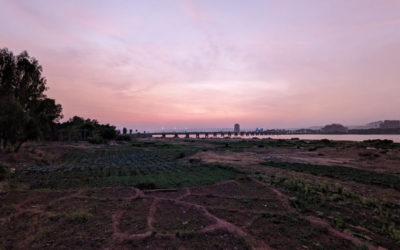
Hi, im asking about what’s better to start the journey from zouaret to nouadhibou or the opposite and if starting from naouadhibou is there’s a way to go from there to Morocco or i need to go back to nouadhibou?
It’s definitely better to go from Zouérat to Nouadhibou rather than vice versa. If you leave from Nouadhibou you will be in empty wagons not even able to see your surroundings. It’s still just as filthy with dust from the iron ore but without the scenery. You also will spend a lot of time getting blasted by the sun. If you are asking if there is a way to go from Zouérat to Morocco, we have never tried this or inquired so can’t really help on that one…
What months would you recommend doing this? Would May be too hot already?
May will be scorching hot, but Matt did it then and he survived. I don’t think it’s out of the question. But the more accommodating months will generally be November – February.